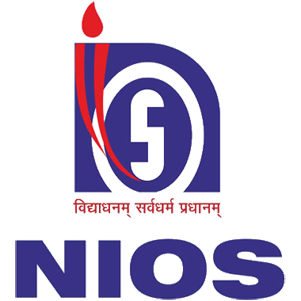Looking for:
Microsoft teams msi all users.Bulk install Teams using Windows Installer (MSI)

If this occurs, however, two different users will have separate installation entries created. If either user uninstalls the Teams Machine-Wide Installer, the files will be removed, and it will be shown as uninstalled for the user performing the uninstall, but the second user will still show an installation entry present, even though the files have been removed.
By default, the script will populate the AllowMsiOverride key only if it does not already exist. Therefore, if your organization wants to push a value of 0 to some users, this value will remain even if the script is ran.
If you want to forcibly reset the value back to 1 for all users, you can pass the -OverwritePolicyKey switch. The CheckMsiOverride. Copy the CheckMsiOverride. Specify a schedule that is appropriate for your organization. If no update is required, the script will make no changes, so there are no issues running it often such as daily. Determine the version number for this MSI, either by installing locally or extracting the files and looking at the properties of the Teams. If you used the PublishLatestVersion script, the version number is the folder name they are placed into.
Have the package execute the script similar to as follows, using the proper location for the script for your package deployment software:. It will also write to the Application event log with the source “TeamsMsiOverride” for any failures, or if an update completed successfully.
This project welcomes contributions and suggestions. Watch the following session to learn about the benefits of the Windows Desktop Client, how to plan for it and how to deploy it: Teams Windows Desktop Client. Bulk deployments are useful because users don’t need to download and install the Teams client manually.
Rather, Teams will be deployed to computers and then auto-launch the first time users sign into a computer. We recommend that you deploy the package to computers rather than a specific user.
By targeting computers, all new users of those computers will benefit from this deployment. Teams can also be distributed to your organization as part of Microsoft Apps for enterprise.
Download the MSI that you want to install on computers in your organization. The x86 architecture bit or bit Teams supports is independent of other Office apps installed on a computer. If you have bit computers, we recommend installing the bit Teams MSI even if the computer is running a bit version of Office. Install the bit version of Teams only on bit operating systems. Two inbound rules for teams. If you want to prevent Teams from prompting users to create firewall rules when the users make their first call from Teams, use the PowerShell script in Sample script – Microsoft Teams firewall PowerShell script.
Administrative access is required to install the Mac client. During the installation, the PKG will prompt for admin credentials. The user needs to enter the admin credentials, regardless of whether or not the user is an admin. IT Pros can use a managed deployment solution, such as Jamf Pro, to distribute the Teams installation files to all Macs in their organization.
On Linux, package managers such as apt and yum will try to install any requirements for you. However, if they don’t then you will need to install any reported requirements before installing Teams on Linux. Users will be able to install native Linux packages in. The signing key to enable auto-updating using the system’s package manager is installed automatically. Teams ships monthly and if the repository was installed correctly, then your system package manager should handle auto-updating in the same way as other packages on the system.
The Teams mobile apps are available for Android and iOS, and are geared for on-the-go users participating in chat-based conversations and allow peer-to-peer audio calls. Android : Support is limited to the last four major versions of Android. When a new major version of Android is released, the new version and the previous three versions are officially supported.
When a new major version of iOS is released, the new version of iOS and the previous version are officially supported. Distribution of the mobile apps via MDM or side-loading is not supported by Microsoft. If you try to install the bit version of Teams on a bit operating system, the installation won’t be successful and you won’t receive an error message.
MSI files can’t be used to deploy updates. The Teams client will auto-update when it detects a new version is available from the service. To re-deploy the latest installer, use the process of redeploying MSI described below. If you deploy an older version of the MSI file, the client will auto-update except in VDI environments when possible for the user. If a very old version gets deployed, the MSI will trigger an app update before the user is able to use Teams.
We don’t recommended that you change the default install locations as this could break the update flow. Having too old a version will eventually block users from accessing the service.
Make sure the computers you install Teams on meeting the requirements listed in Hardware requirements for Microsoft Teams. If a user uninstalls Teams from their user profile, the MSI installer will track that the user has uninstalled the Teams app and no longer install Teams for that user profile. To redeploy Teams for this user on a particular computer where it was uninstalled, do the following:.
I’ve seen plenty of requests for Microsoft to change that, but it took them this long just to make an MSI installer available, so I wouldn’t hold my breath on that change coming any time soon. This is just how the installer is configured. Looks like there is a machine level installer they’ve made, and with a bit of updating ourselves, this looks like the answer until MS sort it out properly. This works on a desktop with multiple user profiles on a Windows 10 device. Has anyone tried the msi in a RDS environment?
This topic has been locked by an administrator and is no longer open for commenting. To continue this discussion, please ask a new question.
One moment, please
An easier way to install Teams is to install the Teams Installer on every computer. The Teams Installer is placed in the Program Files folder. I’ve been tasked with deploying Microsoft Teams to our workstations with the MSI through and SCCM.
Microsoft teams msi all users
Has anyone tried the msi in a RDS environment?
Microsoft teams msi all users. MST to install Microsoft Teams MSI (VDI) to regular Windows 10
The goal: prevent Teams individual installations from installing any components to ProgramData. I have done extensive parallel testing on this server and on a different server that is R2 OS and in RD admin mode instead of RD application mode.
On that server, everything functions perfectly with no ProgramData files and no problem automatically uninstalling individual users’ Teams after uninstalling the Teams Machine-Wide Installer.
I install the Teams Machine-Wide Installer, as admin, by running this in a command prompt. The mapped T: drive is where I keep software installation packages. This, in turn, correctly initiates automatic installation for each user at next logon to the server. It installs files to these folders:. This creates these two registry RUN values:. But as you can see above, the user-level installation did not create either of those folders, so nothing happens.
I tested that, and it works, but there is no sense in doing this until we get the problems worked out, or we will be back in the same boat immediately upon Teams reinstallation. I went through your post, and from what I understand one of the reason of your problem is your windows server Seeing that you have already find the cause after your tests, what I can suggest you now is to try an alternative and see if it can work with the your windows server Was this reply helpful?
Yes No. Sorry this didn’t help. Thanks for your feedback. The link you provide is where I downloaded the installation files I am using. From what I can tell, the only difference between what I did and pushing it out via GPO is not the end result for the user; it appears that the distribution method is only the means by which the Machine-Wide Installer is deployed to computers and servers. But I need it on only one server, and it seems like a lot of overhead to configure a GPO just to get the installer itself installed on this server.
The Teams setup installs those files to ProgramData when it can’t run some. If you have a software restriction policy or applocker policy preventing executables running within that path, then you’ll need to whitelist various executables. Then uninstall the users’ copies of Teams from the ProgramData path. Choose where you want to search below Search Search the Community.
Search the community and support articles Microsoft Teams Teams for business Search Community member. Brian D. This thread is locked. You can follow the question or vote as helpful, but you cannot reply to this thread. I have the same question 1. Report abuse. Details required :. Cancel Submit. Hi Brian, Greetings. Thank you for raising your concern in this community. I will be waiting for your feedback. Regards, Mac. How satisfied are you with this reply? Thanks for your feedback, it helps us improve the site.
Three things: 1. In reply to Brian D. Hart’s post on October 18, I’m late to the party but hopefully this tidbit is still useful. This site in other languages x.




